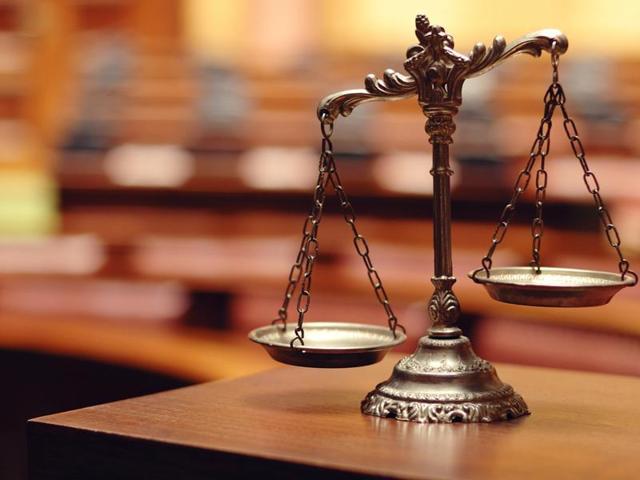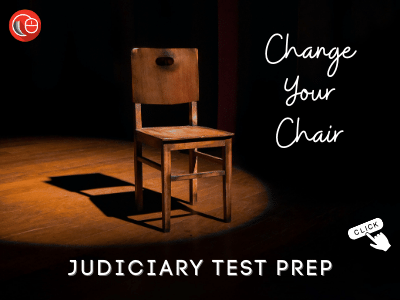This article is written by Suryansh Singh, a 3rd-year law student from Indore Institute of law. This article mainly focuses on the concept of repeal and its effects while repealing a statute.
Table of Contents
Introduction
In general, the term repeal stands for to cancel or to revoke. But in the context of law, it means to “abolish statutes”. Repeal of statutes means the abolition of the law, and once if any statute is abolished then it is considered void and possesses no effects. In addition, there is no basic difference between amendment and repeal. Both the term amendment and repeal is used for stating a similar expression that is the substitution or omission or addition.
As per Halsbury’s Laws of England, the term repeal stands for revoking and abolishing an act and all its effects which cause it to cease to be a part of statutes of books or body of law.
According to the Black’s law dictionary, the term repeal means a legislative act which abrogates or obliterates an existing statute.
There exist two types of statutes temporary and perpetual. Temporary statutes tend to have effects for a specific period of time. They have no effects after the expiry of the specific period, however, the permanent or the perpetual statute is the one in which the statute remains effective until it is substituted or repealed by the legislative act. The power to repeal a statute is conferred to the legislature is similar to the powers it has for the enactment of a statute. For example, the Companies Act, 2013 repealed the Companies Act 1956, the Criminal Procedure Code, 1973 repealed the previous Criminal Procedure Code, etc. such power of repealing a statute is similar and coextensive to the power of making or enacting a law. Both the union and the state legislature are empowered with such power however they are restricted to delegate the power of repealing.
What are the objects of the Repealing Act?
The primary object of this act is to bring necessary changes in the existing law for changing socio-economic and cultural conditions from time to time. The purpose of this Act is to remove the outdated or obsolete matter from the body of law. After the removal of obsolete matter, it is the court that decides whether the new provision meets its goal and has different intentions or not. This act is the editorial revision by abolishing obsolete and unnecessary matter of the statute and adding new and proper information in the books of the statute.
What are the kinds of repeal?
There are two types of repeal:
- Express repeal
- Implied repeal
Express repeal
Express repeal is an expression which means the abolition of the previously enacted statute by the newly enacted provisions of a statute through expressed words embedded under the new statute enacted. The statute which has been repealed is called repealed statute and the one which replaces the earlier statute is called the repealing statute. In general, when an earlier statute or some of its provisions are repealed through express words embedded under the newly enacted statute stating that the provisions are now of no effect is called the express repeal.
What are the essential features that constitute express repeal?
- The first and foremost feature is that there must be a repealing statute.
- The earlier statute must be repealed by the new enacting or repealing statute.
- The enacted statute must have clear intention showing the effect of the repeal.
So it is understood that any earlier statute or provision of the statute can be removed or repealed by the enacted statute showing incompatibility with the previous one.
R. v. longmead, [(1975) 2 Leach 694: 168 E R 448]
In the instant case, it was held that the legislature in order to pass a repeal or continue any statute is not restricted to use precise forms of words.
Implied repeal
The term implied means implicit or hinted. So when a statute becomes obsolete and it is inferred that it is no longer and shall be repealed with the newly enacted statute then this process of repealing is called implied repeal.
For example, if we enter a car showroom it is intended that we are there to buy cars. It is implied, similarly, if there arises any inconsistency in the statute and due to certain circumstances it becomes necessary to repeal the statute with the new one though such situation is not expressly stated, then it is implicit for the implication of repeal.
When the reference is not direct then the matter is decided through the meaning and nature of the words enshrined under the repeal clause. During the absence of provisions relating to express repeal the continuance of any statute or legislation is presumed.
In the case of implied repeal, the burden lies over the person who asserted the implication of repeal. However, it has also been mentioned that if the newly enacted statute shows no clear intention or is inconsistent with the provisions of the earlier act then such an assertion or presumption is rebutted and the act of repeal is done by inferring necessary implications.
The concept of implied repeal is loosely based on the following maxim “Leges posteriores priores contrarias abrogant”. This means that the earlier or previously enacted law shall be obliterated or abolished by the new one.
Under the following circumstances, the implied repeal is inferred
- The first circumstance is when both the subsequent and the earlier enacted acts are inconsistent with each other one of the two can remain effective.
- When the subject of the earlier act is covered by the act and is intended to substitute.

Test of the Implied Repeal
There is the assertion against the repeal by implication. The reason for making such an assertion is that legislature while making or enacting the law has full knowledge about the current laws on the subject matters. If the legislature has no provision regarding the repeal of the statute then it is asserted that the legislature has no intention to repeal the existing statute.
Municipal council, Palari v. T.J. Joseph AIR 1963 3C 1561, p. 1564
In the instant case, it was held that if an act or provision enacted is inconsistent from the act previously enacted and one of the acts must be obliterated. The presumption, in this case, rebutted and the implied repeal is inferred.
For the implied repeal of a statute following points are to be considered:
- Whether the previously enacted laws are in direct contradiction to the later enacted laws.
- The conflict between the laws is of such a nature that can’t be resolved and reconciliation between the laws is not possible.
- Whether the newly enacted act is not consistent with the previously enacted act and one has to be obliterated.
- When both the laws are of such a nature that occupy and deals with the same field.
Delhi Municipality V. Shivshanker, [AIR 1971 SC 815]
In the instant case it was held by the supreme court of India that the test which is applied in case of repugnancy under Article 254 of the Indian constitution while resolving the conflicts arising between the laws enacted by the parliament and the laws created by the state legislature, this test of determining repugnancy shall be applied in case of implied repeal of a statute. This test includes:
- Whether there exists a direct contradiction between the two statutes or provisions.
- When the law tends to occupy the same field.
- When the legislature explicitly focused on the code of the particular subject matter replacing the earlier law.
Ratanlal Adukia v Union of India (AIR 1990 SC 104)
In the instant case, the Supreme Court stated that the doctrine of implied repeal is loosely based on the statement that the legislature assumed the current state of the law did not intend to generate any vagueness by retaining the conflicting provisions. The court while implicating this doctrine examines the nature and scope of the two enactments by giving effect to the legislative intent.
Damji V. L.I.C (AIR 1966 SC 135)
In the instant case it was held that section 446 embedded under the companies act 1956 is a general provision whereas the section 15 and 41 enshrined under the Life Insurance Corporation Act, 1956 are special provision so there exists a difference and the companies court is not competent or have jurisdiction over the matters which falls under the ambit of Insurance Corporation Act, 1956.
What do you mean by Repeal by Desuetude?
As it has been already stated that there are two types of statutes namely temporary statute and the permanent statute. There exists a very thin line difference between both the statutes. A temporary statute is enacted for specific purposes and for a specific time period and gets repealed after the expiry of that particular period or fulfillment of that purpose. A permanent statute which is also known as a perpetual statute is enacted with a long term goal and gets repealed by the subsequent statute.
There are certain acts which possess the nature of permanent statute but remains inoperative or ineffective for a long period of time as they are not applied or taken into consideration by the court for a long period of time. Due to this, the statute loses its recognition and its applicability. Such disobedience of act is known as Repeal by Desuetude.
The Municipal Corporation for the city of Pune and another v. Bharat forge Co. Ltd and others (J.T. 1995 (3) S.C. 312)
In the instant case, the following doctrine of desuetude was highly criticized as it was assumed that the perpetrators or the accused who have committed certain crimes and are punished for violation of certain laws or statute which has become ineffective can be protected and escape their criminal liability.
What are the effects or consequences of repeal?
The effects of the repeal of a statute have been described under the following heads:
- In respect of common law
- The general effect of repeal
- General clause Act, 1897
Effects or repeal with respect to common law
- Common law is commonly known as the law made by the judge. It contains the following effect regarding the repeal of the statute.
- The first effect is that the statute repealed is abolished and obliterated and becomes dead as if the enactment of the statute.
- All the rights created and enshrined under the repealed act is removed.
- The repealed portion gets resuscitate if the repealing act is repealed by the new subsequent act and such an act shows its intentions.
General consequences of repeal
- A newly enacted law repudiate the existing one.
- The statute after getting repealed becomes ineffective.
- Statute repealed is abolished by the repealing statute as if it had never been made by the legislature.
- Except for a saving clause, each and every part of the statute is considered unconstitutional.
- In order to validate a transaction made under a repealed statute, the law can retrospectively amend the statute even after it is obliterated.
Effects embedded under the General Clause Act, 1987
If any act made after the incorporation and commencement of this Act, repeals any statute made until now then until a different intention or object appears between the act and the repeal shall not- effects the operation commenced under the provision of this Act.
Conclusion
It can be concluded that the Repeal of statutes means the abolition of the law, and once if any statute is abolished then it is considered void and possesses no effects. In addition, there is no basic difference between amendment and repeal. Both the term amendment and repeal is used for stating similar expression that is the substitution or omission or addition. Both the union and the state legislature are empowered with such power however they are restricted to delegate the power of repealing. The primary object of this act is to bring necessary changes in the existing law for changing socio-economic and cultural conditions from time to time. The purpose of this act is to remove the outdated or obsolete matter from the body of law. After the removal of obsolete matter, it is the court that decides whether the new provision meets its goal and has a different intention or not. This act is the editorial revision by abolishing obsolete and unnecessary matter of the statute and adding new and proper information in the books of the statute.
 Serato DJ Crack 2025Serato DJ PRO Crack
Serato DJ Crack 2025Serato DJ PRO Crack












 Allow notifications
Allow notifications



